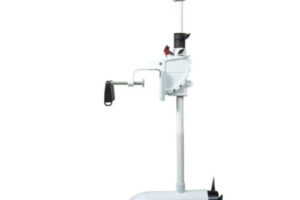The world of business moves fast, and so do client expectations. As we head deeper into 2025, companies in every sector are rethinking how they approach proposals to win contracts in an increasingly competitive market. A well-crafted contract proposal is more than just a document with numbers and promises. It is your opportunity to stand out, build trust, and show clients that you are the right partner for their needs. To help you stay ahead, this blog highlights the top trends in contract proposal writing for 2025 that you should not ignore.
Why Staying Current Matters
The contract proposal you wrote a few years ago might not be enough to impress today’s clients. Buyers are more informed, more demanding, and expect greater transparency and value. As industries embrace technology and new ways of working, your proposals must evolve too. Keeping up with the latest trends in contract proposal writing ensures you can:
-
Compete effectively in a crowded market.
-
Build stronger client relationships from the start.
-
Improve your win rate and business growth.
1. Personalization at Scale
Gone are the days of sending out generic proposals and hoping they land well. In 2025, personalization is key. Clients want to see that you understand their specific needs, challenges, and goals. A personalized contract proposal speaks directly to the client’s situation and shows that you have done your homework.
How to apply this trend:
Use data from client discovery calls, research, and previous interactions to tailor each proposal. Even when using templates, ensure the content is customized for the client’s industry, location, and project type.
2. Integration of AI and Automation
AI tools are transforming how companies create proposals. In 2025, many businesses are using AI-powered software to draft sections of their contract proposal, analyze client data, and suggest winning strategies based on past performance.
How to apply this trend:
Explore tools that can help speed up proposal writing without sacrificing quality. AI can assist with generating standard content, checking compliance requirements, or even predicting client preferences based on analytics.
3. Interactive and Digital-First Proposals
Clients expect a smoother, more engaging experience. Instead of static PDF documents, more companies are sending interactive proposals through digital platforms. These proposals allow clients to click through sections, watch embedded videos, view diagrams, and even approve proposals electronically.
How to apply this trend:
Consider moving beyond traditional formats. Platforms that allow interactive elements can make your contract proposal stand out and make it easier for clients to engage with your content.
4. Sustainability and Social Responsibility Focus
Today’s clients care about more than just price and delivery. They want to know that the companies they work with are committed to sustainability and social responsibility. Many government and large corporate clients now require proposals to include environmental impact statements or diversity and inclusion plans.
How to apply this trend:
Include a section in your contract proposal that addresses how your company supports sustainability, ethical practices, or community engagement. Be specific about initiatives that relate to the project.
5. Greater Emphasis on Value Over Cost
While pricing will always be a major factor, 2025 sees clients looking beyond the lowest bid. They want to understand the overall value your solution brings. This includes long-term cost savings, quality, risk reduction, and innovative approaches.
How to apply this trend:
Focus your contract proposal on outcomes and value. Highlight how your approach will save the client time, reduce risk, or deliver better performance over the life of the project. Use case studies or data where possible.
6. Faster Turnaround Times
With clients moving at digital speed, long delays between inquiry and proposal delivery can cost you the job. In 2025, companies are investing in tools and workflows that allow them to create and send contract proposals more quickly.
How to apply this trend:
Streamline your proposal process using templates, content libraries, and collaboration tools. Set internal targets for turnaround times that align with client expectations.
7. Stronger Focus on Compliance and Data Security
With increasing regulations on data privacy, cybersecurity, and ethical sourcing, clients want to know that your business can meet these standards. Proposals that clearly address compliance give clients confidence in your professionalism.
How to apply this trend:
Include information in your contract proposal about how you comply with relevant laws, protect client data, and manage risks. This is especially important for government contracts or industries like healthcare and finance.
8. Data-Driven Proposals
Companies are increasingly using analytics to inform how they write and present proposals. By analyzing which proposals won or lost, you can identify patterns and make smarter decisions in the future.
How to apply this trend:
Track metrics like win rates, pricing accuracy, and client feedback. Use this data to refine your contract proposal templates and strategies.
9. Simplified Language and Clear Design
Clients are busy and do not want to wade through dense, jargon-filled documents. Proposals in 2025 are leaning toward plain language, clean layouts, and easy-to-scan sections.
How to apply this trend:
Keep your contract proposal clear and concise. Use headings, bullet points, and graphics to make key points easy to find and understand.
Conclusion
The contract proposal landscape in 2025 is shaped by technology, client expectations, and the need to deliver more value in less time. By embracing trends like personalization, AI integration, interactive formats, and a focus on sustainability, you can create proposals that not only win contracts but also strengthen client relationships. Take time to review your current proposal process and identify where you can adapt to these trends. Staying ahead of the curve will ensure your proposals continue to open doors and drive growth for your business.



